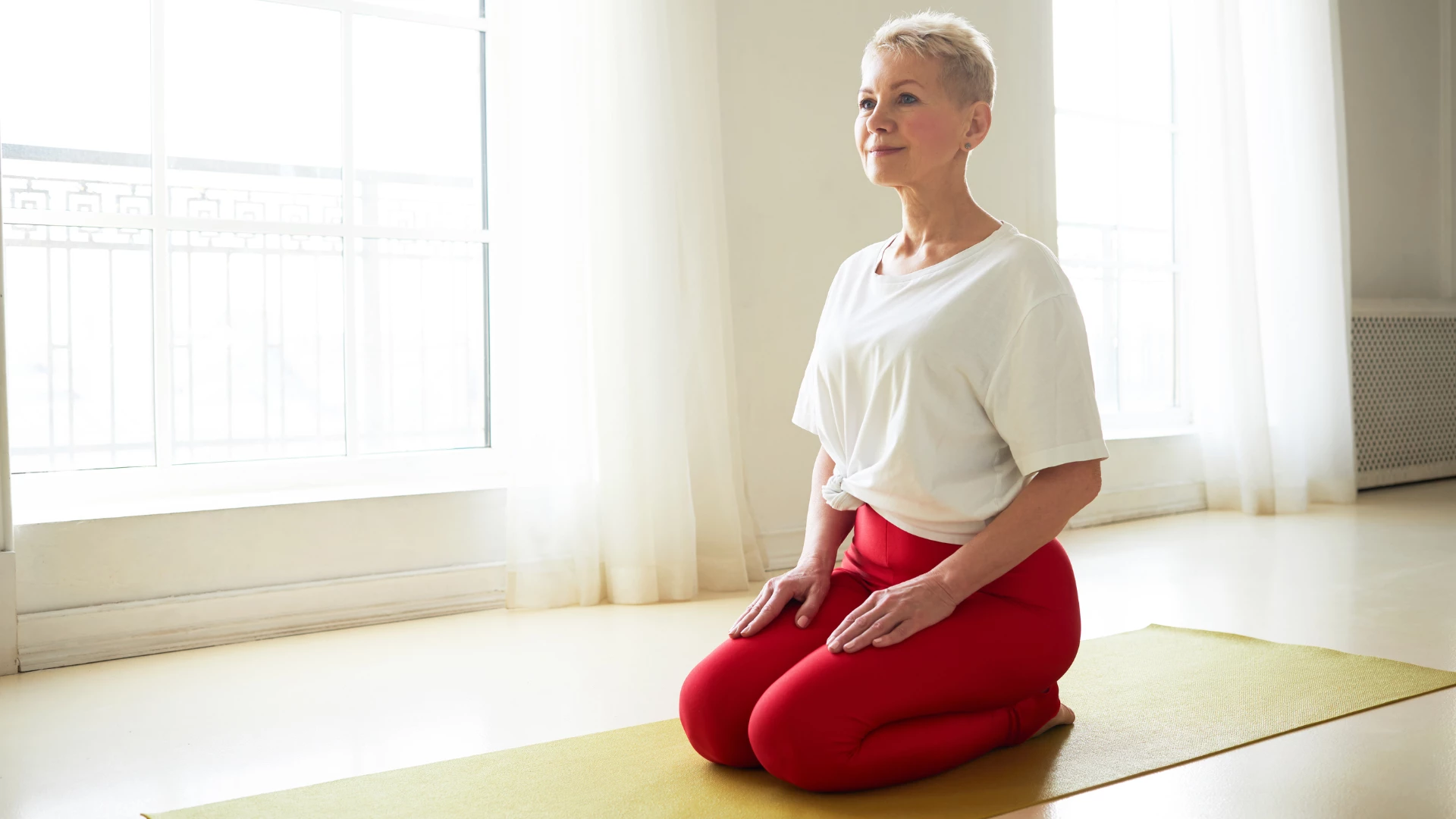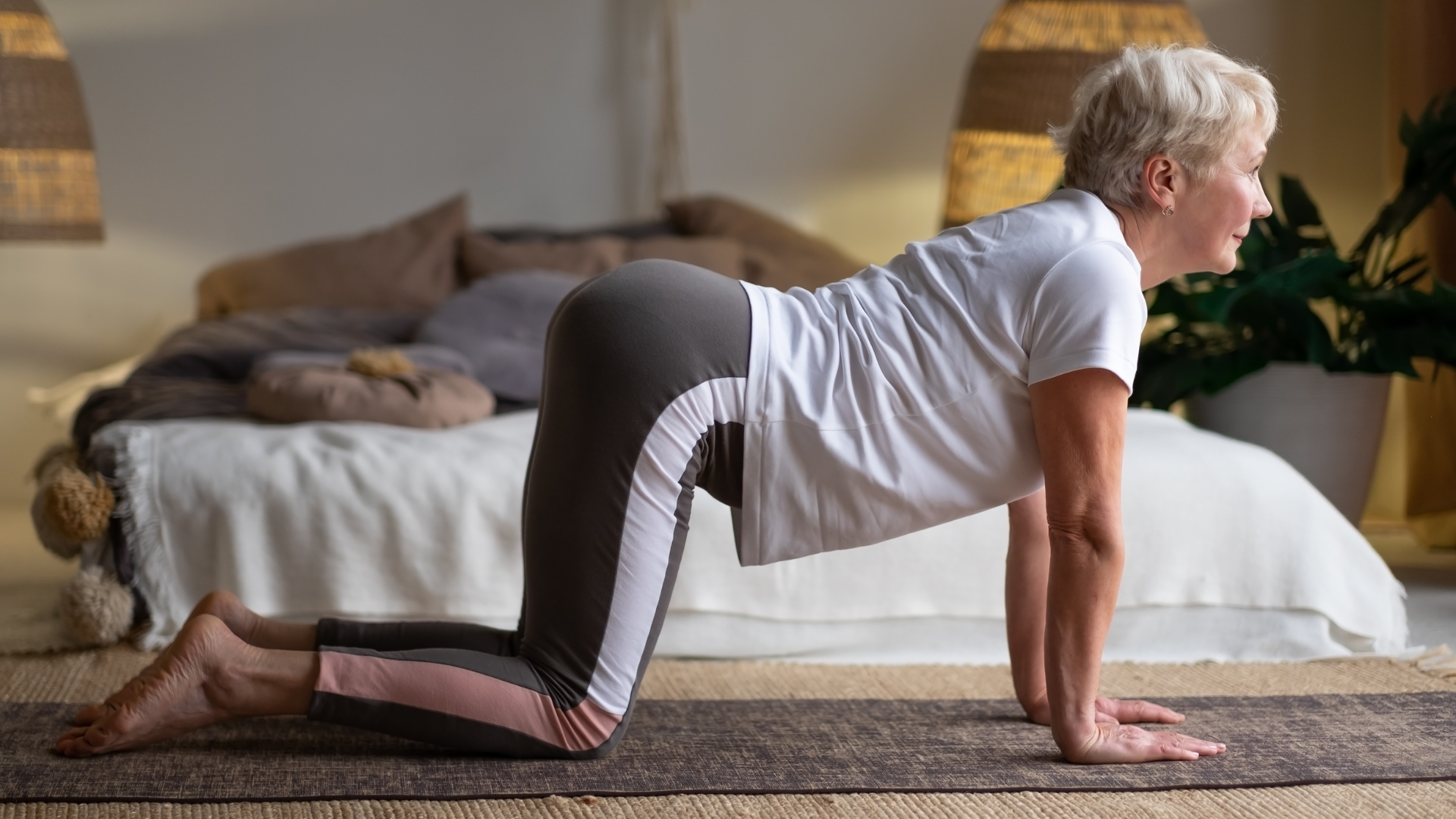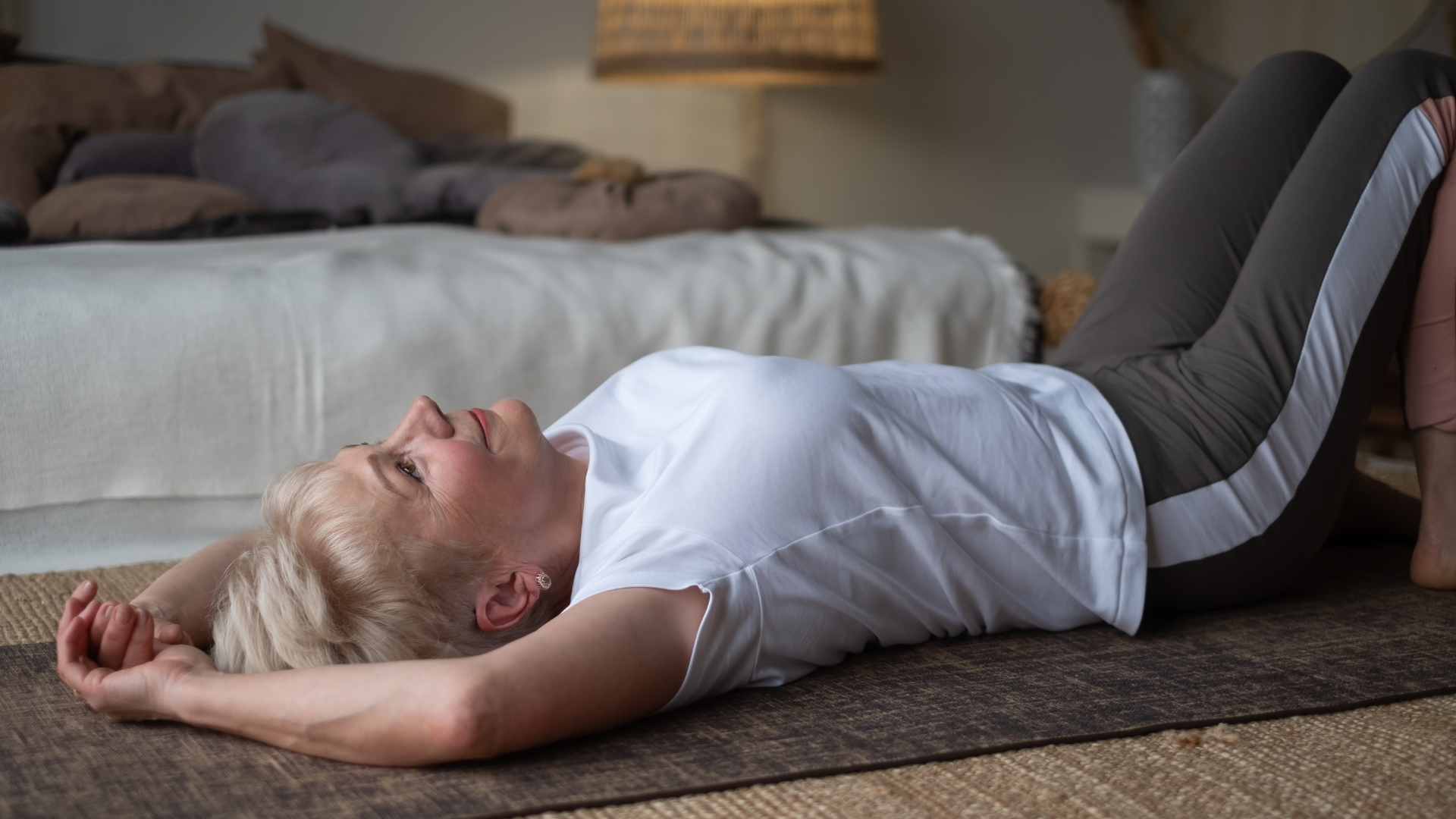4 Yoga Practices for Respiratory Health

Article At A Glance
Because respiratory problems are so prevalent lately, I thought I’d revisit a topic that I wrote about six years ago about how you can use yoga to foster respiratory system health. Yoga practices for respiratory health can help with mild asthma and COPD by improving breathing efficiency and decreasing inflammation. And these days, yoga teachers are offering yoga for respiratory health to help students during their recovery from COVID.
CAUTION: Yoga has mixed reviews on its benefits for moderate-to-severe asthma. For this specific condition, we recommend working with a very experienced teacher.
4 Yoga Practices for Respiratory Health
Now you may think—as I did at first—that yoga practices for respiratory health are all about doing pranayama. But actually, there is much more to it! Here are four different techniques you can use to foster respiratory health:
- Keep your respiratory muscles strong and flexible. Practice asanas that move your spine in all directions of movement and that stretch and strengthen the muscles all around your upper torso.
- Learn about your breathing patterns by practicing breath awareness.
- Exercise your breathing muscles with pranayama practices. Especially helpful are the forms of pranayama that lengthen your inhalation and exhalation, such as gradual lengthening of equal breath, or that include rapid inhalations and exhalations, like Skull Shining (Kapalabhati) breath.
- Enable your respiratory system to rest and repair itself by practicing yoga for stress management.
Asana: Yoga Practices for Respiratory Health

In addition to keeping your respiratory muscles strong and flexible, you can use your asana practice to reverse changes to your body due to aging, physical habits, injuries, and scoliosis that negatively impact your ability to breathe. These include structural changes to both muscles and fascia of your chest as well as the chest wall bones and thoracic spine.
In general, you can reverse changes by:
- Improving your posture by strengthening back spinal muscles.
- Increasing movement in your chest and spine by regularly stretching your chest muscles in all directions.
- Improving the flexibility and strength of your respiratory muscles and fascia by regularly practicing a combination of well-balanced asana sequences and breath practices.
You can also use asanas to target specific problem areas. For example, if you are developing more rounding of the thoracic spine, adding more dynamic and static backbending postures into your practice can help reduce the rounding. You can also use asanas to strengthen weak chest muscles around your lungs. For example, you can use Plank Pose (Phalakasana), Side Plank Pose (Parsvaphalakasana), and Upward Plank Pose (Urdhva Phalakasana) to strengthen the muscles around your chest wall. Active backbending poses, such as Cobra Pose (Bhujangasana) or Upward Facing Dog Pose (Urdhva Mukha Svanasana), can strengthen your back and front chest muscles.

Breath Awareness: Yoga Practices for Respiratory Health

Your ability to breathe in a healthy way can be compromised by unhealthy breathing patterns, such as holding excessive tension in your abdominal muscles. However, by practicing breath awareness with special attention to the movements of your chest and belly, you can learn about your particular breathing patterns and potentially identify any problems.
In normal, healthy breathing, as you inhale, your chest and ribs will expand slightly and your belly will rise up or bulge forward. As you exhale, your belly will relax back and your chest and ribs will relax back toward the center.
2 Breathing Habits that Compromise Respiratory Health
Although not common, there are two different breathing patterns that occur in some people that can be problematic:
- Chest Breathing: Instead of your belly expanding on your inhalation and relaxing back on your exhalation, there is no movement in your belly at all. All the movement during respiration is in your chest alone.
- Reverse Breathing: Instead of your belly expanding on your inhalation, it actually sucks in during the inhalation and your chest expands dramatically. And on your exhalation, your belly rises as your chest relaxes.
How to Identify Problematic Breathing Patterns
- Start by setting yourself up in a comfortable reclined pose, such as Relaxation Pose (Savasana) or Reclined Bound Angle Pose (Supta Baddhakonasana), or a comfortable supported seated pose, such as Cross-Legged Pose (Sukhasana) with your back against the wall.
- Take a moment to relax completely and breathe naturally, with an easy, relaxed breath.
- Keeping your breath easy and relaxed, turn your awareness to your chest and belly as you inhale and exhale. Just watch. Is your belly rising/expanding/bulging with your inhalation and relaxing back with your exhalation? Or is something else going on?
If you do identify a problematic breathing pattern—or think that you have—unless you are a very experienced practitioner of pranayama, it’s best for you to work with your yoga teacher or yoga therapist to change your breathing habits. Your present pattern of breathing is likely to be a well-established one. An expert will not only be able to observe your breathing with a trained eye, but will also have techniques available to effectively coach you to change your ingrained habits.

Breathing Practices for Respiratory Health
A well-rounded breath practice that includes calming, balancing, and simulating practices, can promote the health of your respiratory system by improving the strength and flexibility of your chest muscles and fascia, as well as improving the alignment of your ribs and spine. In general, you’ll benefit from actively challenging your diaphragm with practices that extend the length of your inhalations and exhalations and that include inhalation and exhalation pausing (Kumbhaka).
In addition, studies have shown that pranayama is effective in improving lung function in those with chronic obstructive pulmonary disease (COPD). For this condition, equal lengthening of the inhalation and exhalation is recommended.
Finally, breathing practices that calm your nervous system, such as extending the exhalation or pausing at the end of it, add the benefit of lowering overall stress, which can be particularly helpful to people who are challenged by a respiratory condition.
Manage Your Stress

Like the rest of your body, your lungs and the rest of your respiratory system need downtime to rest and repair. In the rest-and-digest state, your respiratory system will get a good rest because you don’t need as much oxygen in this state, so lungs and the respiratory system won’t need to work as hard! And, of course, spending time in the rest-and-digest state provides the optimal setting for the system to heal from problems and repair itself.
So spending time in the rest-and-digest state provides an important break that will foster the health of your entire system. In addition, reducing stress also has a positive effect on your immune system. This could lower your chances of getting infections of the respiratory tract, from your nose and mouth all the way into the deep part of your lungs.
Because many people with chronic respiratory conditions experience ongoing anxiety or other negative emotions related to their condition, those who have breathing problems can improve the quality of their lives by practicing stress management. This will help quiet your mind and calm your emotions, as well as resting your respiratory system. However, if you have respiratory system problems, meditating on your breath can actually cause stress if you worry about breathing. So if this is the case for you and you want to meditate, we recommend either choosing a different type of focus, such as a mantra, or using a simple guided meditation.
Also, read...
Study: Yoga Can Help Foster Greater Mind-Body Integration – The Four Stages of Body Awareness
Want to Feel Better? Just Breathe – The Power of Bhramari Pranayama (Humming Bee’s Breath)
The Health Benefits of Multi-Day and Intermittent Fasting Part 2
Related courses

Nina Zolotow, RYT 500, the author of the forthcoming book “Yoga for Times of Change” and the Editor-in-Chief of the Yoga for Healthy Aging blog, is both a yoga writer and a yoga teacher. She trained to be a yoga teacher at The Yoga Room in Berkeley, California, has studied yoga therapy with Shari Ser and Bonnie Maeda, and is especially influenced by the teachings of Donald Moyer. She also studied extensively with Rodney Yee and is inspired by the teachings of Patricia Walden on yoga for emotional healing. Her special area of expertise is yoga for emotional well-being (including yoga for stress, insomnia, depression, and anxiety). She teaches workshops and series classes on yoga for emotional well-being, stress management, better sleep, home practice, and cultivating equanimity.
Nina is the co-author with Baxter Bell of Yoga for Healthy Aging: A Guide to Lifelong Well-Being and co-author with Rodney Yee of Yoga: The Poetry of the Body (with its companion 50 Card Practice Deck) and Moving Toward Balance. She is also the author of numerous articles on yoga and alternative medicine.



